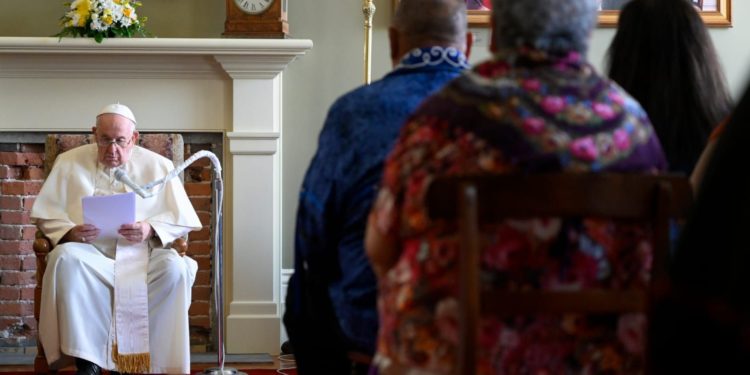In an official statement, the secretary for the United States Conference of Catholic Bishops (USCCB), Archbishop Paul Coakley, responded by saying: “We welcome the [Vatican] statement’s renewed repudiation and condemnation of the violence and injustices committed against Native and Indigenous peoples as well as the Church’s ongoing support for their dignity and human rights.”
“In the centuries that followed the papal bulls at issue, many popes boldly proclaimed the God-given rights owed to all peoples, but we must also confront those moments when individual Christians lacked such boldness or clarity,” Coakley said. “There were times when Christians, including ecclesiastical authorities, failed to fully oppose destructive and immoral actions of the competing colonial powers. In this regard, we too express deep sorrow and regret.”
“These papal bulls did not adequately reflect the equal dignity and rights of Indigenous peoples,” the Canadian Conference of Catholic Bishops (CCCB) said in an official statement, adding that the bulls “were manipulated for political purposes by competing colonial powers; and that Indigenous peoples suffered the terrible effects of the assimilation policies of colonizing nations.”
Echoing the Vatican’s statement, the Canadian bishops recalled Pope Francis’ words during a Quebec address in which he said: “Never again can the Christian community allow itself to be infected by the idea that one culture is superior to others, or that it is legitimate to employ ways of coercing others.”
During what he described as a “penitential pilgrimage,” Pope Francis spoke with Indigenous Canadians and listened to their complaints regarding their treatment by colonizers and the Catholic Church.
The CCCB also praised the Vatican’s recognition of the United Nations Declaration on the Rights of Indigenous Peoples, which if implemented, the CCCB says, “would help to improve the living conditions of Indigenous peoples, to protect their rights, as well as to support their self-development in continuity with their identity, language, history, and culture.”
Credit: Source link




